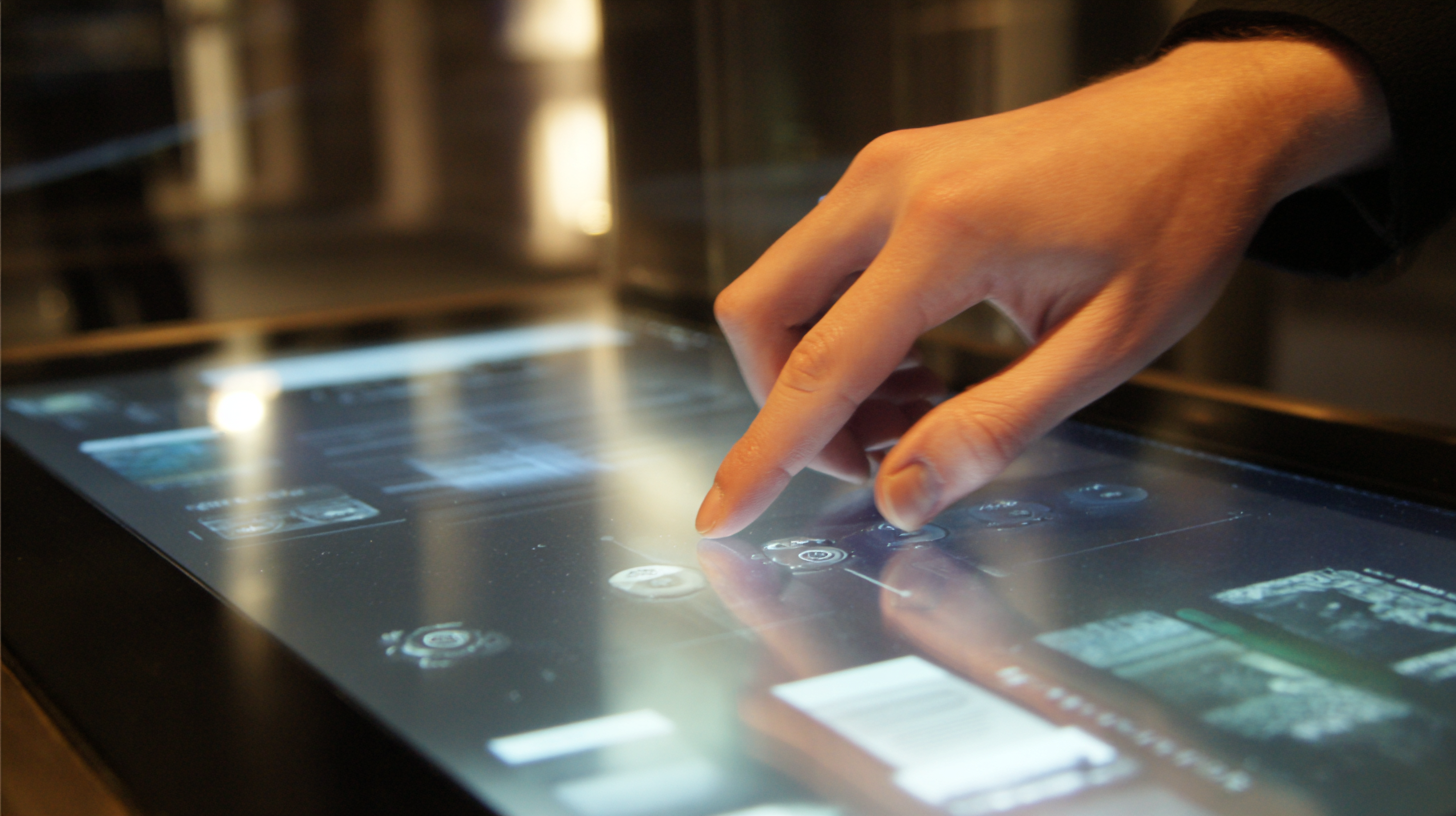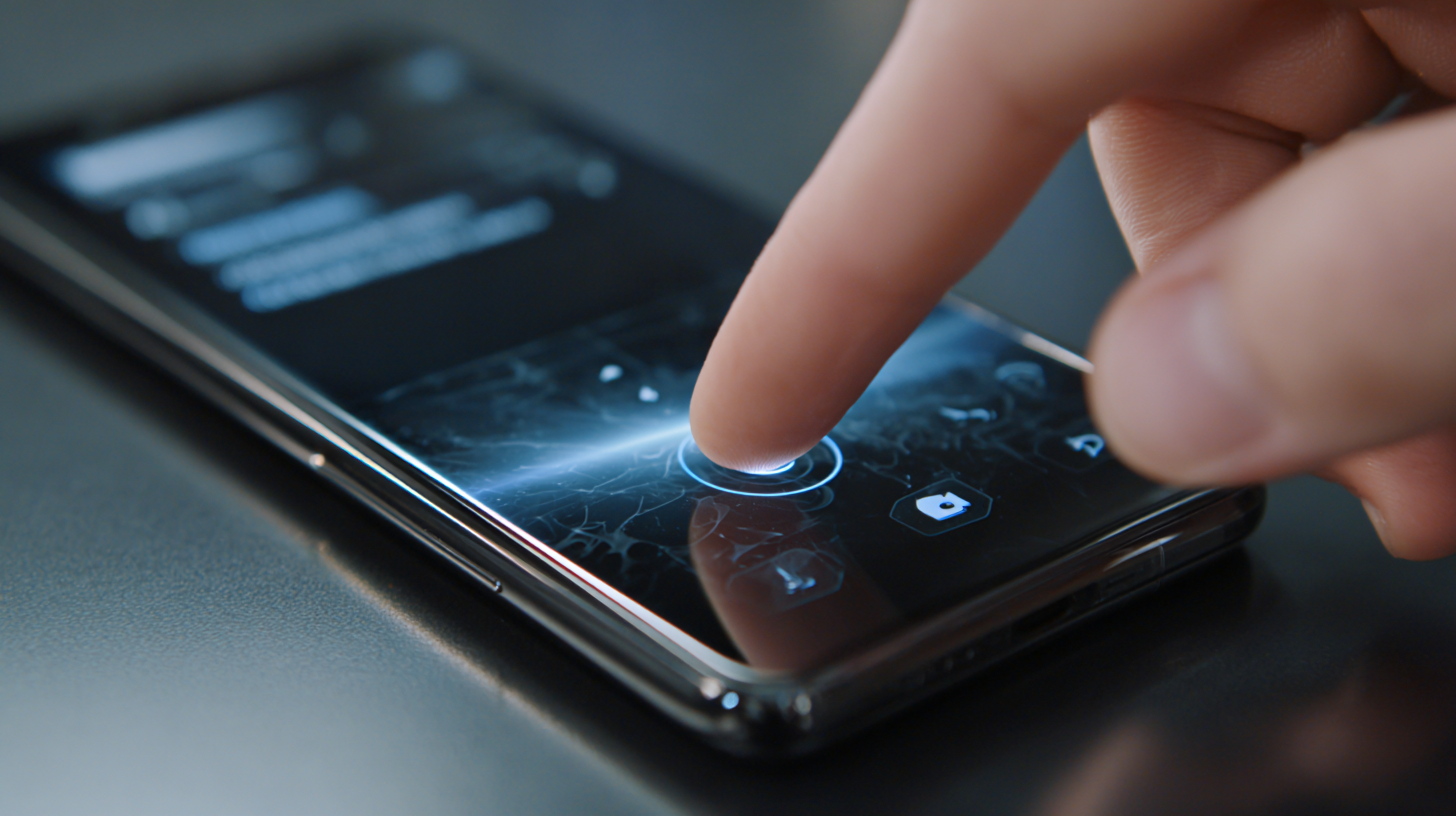In the rapidly evolving world of technology, Oled Touch Screens have emerged as a transformative force, redefining user experience and influencing device design across various sectors. These vibrant displays not only deliver stunning visual quality with deep blacks and vivid colors but also enhance interactivity through their touch-sensitive capabilities. By merging advanced organic light-emitting diode technology with intuitive touch functionalities, Oled Touch Screens enable a seamless and engaging interaction between users and their devices.

This innovation paves the way for more immersive applications, from smartphones and tablets to wearables and smart home devices, fundamentally altering how users connect with technology. As we delve into the impact of Oled Touch Screens, we will explore the implications for design aesthetics, usability, and the overall user experience, making it clear that this advancement is not just a trend but a pivotal element shaping the future of digital interfaces.
The evolution of OLED technology has transformed the landscape of display systems, particularly in touch screens. Unlike traditional LCD panels that utilize a backlight, OLED (Organic Light-Emitting Diode) screens produce their own light. This characteristic allows for deeper blacks, more vibrant colors, and wider viewing angles, fundamentally enhancing the visual experience. Additionally, OLED screens offer increased flexibility in design, enabling manufacturers to create slimmer, more lightweight devices that are both aesthetically pleasing and ergonomic.
 One of the key advantages of OLED touch screens is their rapid response time and higher touch sensitivity. This responsiveness not only improves the fluidity of user interactions but also allows for multi-touch capabilities that are more intuitive and precise. Furthermore, OLED displays consume less power when displaying darker images, contributing to longer battery life for portable devices. As OLED technology continues to advance, we can expect even more innovative applications in device design, offering users an enhanced experience that blends functionality and style seamlessly.
One of the key advantages of OLED touch screens is their rapid response time and higher touch sensitivity. This responsiveness not only improves the fluidity of user interactions but also allows for multi-touch capabilities that are more intuitive and precise. Furthermore, OLED displays consume less power when displaying darker images, contributing to longer battery life for portable devices. As OLED technology continues to advance, we can expect even more innovative applications in device design, offering users an enhanced experience that blends functionality and style seamlessly.
The advent of OLED touch screens has revolutionized user interaction, offering a highly responsive and visually stunning experience. Unlike traditional LCD displays, OLED technology allows for deeper blacks and more vibrant colors, creating an immersive environment that enhances graphical fidelity. This visual clarity is complemented by touch sensitivity, enabling a fluid connection between the user’s intentions and digital actions. With the ability to detect varying levels of pressure, OLED touch screens facilitate more nuanced input, allowing for activities such as drawing and gaming to feel more intuitive and engaging.
Moreover, OLED touch screens have led to innovative design possibilities in device manufacturing. Their flexibility and thinner profile permit the creation of sleeker, more lightweight gadgets that appeal to modern aesthetic preferences. Devices can feature edge-to-edge displays, eliminating bezels and maximizing screen real estate, which transforms the way users interact with their technology.
This seamless integration into devices not only enhances functionality but also elevates the overall user experience, making everyday tasks more efficient while keeping engagement at the forefront. As designers continue to explore the potential of OLED technology, we can anticipate even more dynamic interactions that push the boundaries of how we connect with our devices.
 The advent of OLED technology has revolutionized device design and aesthetics, creating a seamless blend of form and function. Unlike traditional LCDs, OLED displays offer vibrant colors, deeper blacks, and increased energy efficiency, which enhances not only the visual appeal but also the overall user experience. Designers are now liberated from bulky bezels and can integrate these sleek screens into innovative shapes and forms, allowing for devices that are as beautiful as they are powerful.
The advent of OLED technology has revolutionized device design and aesthetics, creating a seamless blend of form and function. Unlike traditional LCDs, OLED displays offer vibrant colors, deeper blacks, and increased energy efficiency, which enhances not only the visual appeal but also the overall user experience. Designers are now liberated from bulky bezels and can integrate these sleek screens into innovative shapes and forms, allowing for devices that are as beautiful as they are powerful.
When considering a new device, look for OLED technology to ensure you’re not only getting the latest in visual quality but also a design that stands out. Manufacturers are taking bold steps in using OLED panels to craft unique surfaces and interfaces, so explore options that showcase these displays to elevate your tech game.
Moreover, keep an eye on how OLED screens contribute to interface design. With their flexibility, they allow for interactive elements that can enhance usability while maintaining an aesthetically pleasing appearance. For tips, always check for features like edge-to-edge displays and customizable wallpapers that leverage the capabilities of OLED screens to create a personalized touch.
The advancement of OLED technology is revolutionizing how we perceive user experience and device design, particularly in its implications for battery life. Unlike traditional LCD displays, OLED screens consume power more efficiently since they illuminate individual pixels rather than relying on a backlight. This means that when darker images are displayed, OLEDs can draw significantly less power, ultimately prolonging battery life. Reports suggest that some laptops equipped with OLED displays are now boasting battery life extending up to 26 hours, a considerable improvement over many LED counterparts.
Furthermore, the emergence of double-layer OLED screens is expected to push these advancements even further. Such technology allows for greater brightness and contrast while enhancing energy efficiency, indicating a promising shift in how we approach battery management in devices. With independent tests showing that OLED displays can outperform traditional LCDs in terms of speed and energy consumption, manufacturers are likely to prioritize OLED technology in future device designs to meet consumer demands for longer-lasting battery life and superior visual experiences. As these trends continue to unfold, it will be intriguing to see how companies integrate OLED technology into their product lines to maximize user satisfaction.
As OLED touch technology continues to evolve, the impact on device design and user experience is becoming increasingly significant. According to a report by ResearchAndMarkets, the global OLED display market is projected to reach $39.2 billion by 2026, with a compound annual growth rate (CAGR) of 13.4%. This growth is driven by the demand for more vibrant colors, thinner displays, and improved energy efficiency, making OLED touch screens a prime choice for smartphones, tablets, and wearables. The integration of touch capabilities into OLED technology not only enhances interactivity but also allows for sleeker designs, as manufacturers can produce devices with minimal bezels and reduced weight.
Looking ahead, emerging trends indicate a shift towards flexible and foldable OLED touch screens, which could redefine device usage. A report by IDTechEx forecasts that the flexible display market is expected to reach $6.5 billion by 2030, indicating a strong appetite for innovation in this arena. These advancements could lead to innovative product forms, such as rollable phones and wearable devices that adapt to different user needs and preferences. As OLED touch technology matures, we can expect to see it integrated into a wider array of devices, ultimately creating a more immersive and intuitive user experience that reshapes how we interact with technology.
| Dimension | Current Impact | Future Potential |
|---|---|---|
| Color Reproduction | Offers broader color spectrum and deeper blacks, enhancing visual experiences. | Further improvements in color accuracy and vibrancy, leading to more immersive displays. |
| Touch Sensitivity | Highly responsive touch capabilities improve user interaction. | Next-gen sensors could enable gesture controls and augmented reality integration. |
| Energy Efficiency | OLED screens consume less power, contributing to longer battery life. | New materials may enhance efficiency, further elongating device usage times. |
| Design Flexibility | Allows for thinner and lighter devices without compromising quality. | Evolving manufacturing techniques may lead to even more innovative form factors. |
| Durability | Current OLEDs are becoming more resilient to scratches and wear. | Advancements in materials could result in even tougher displays. |






